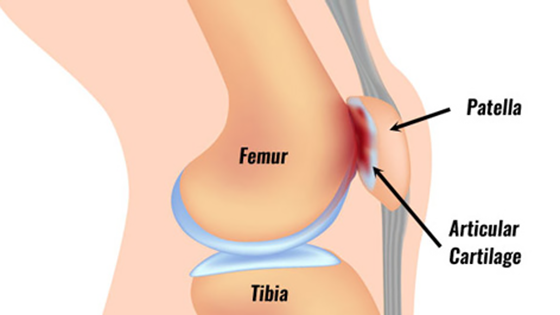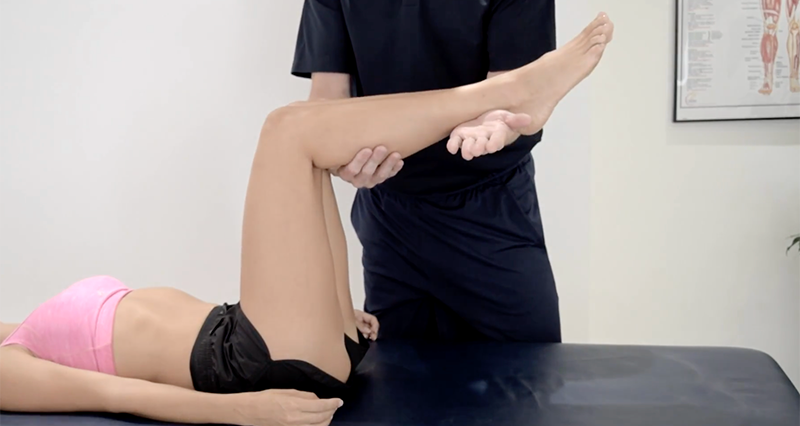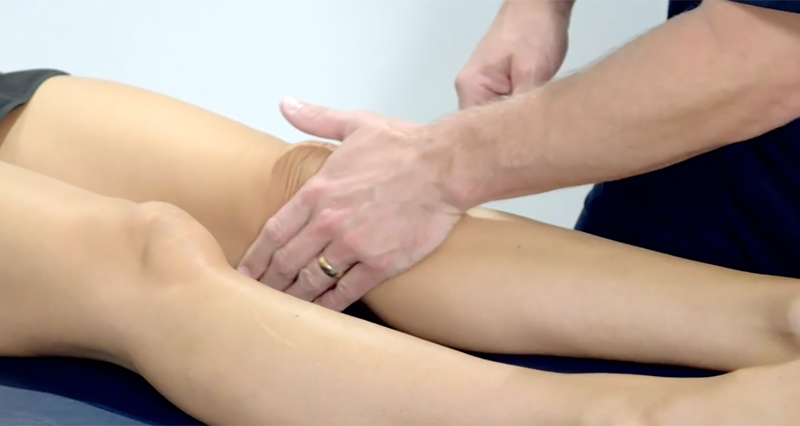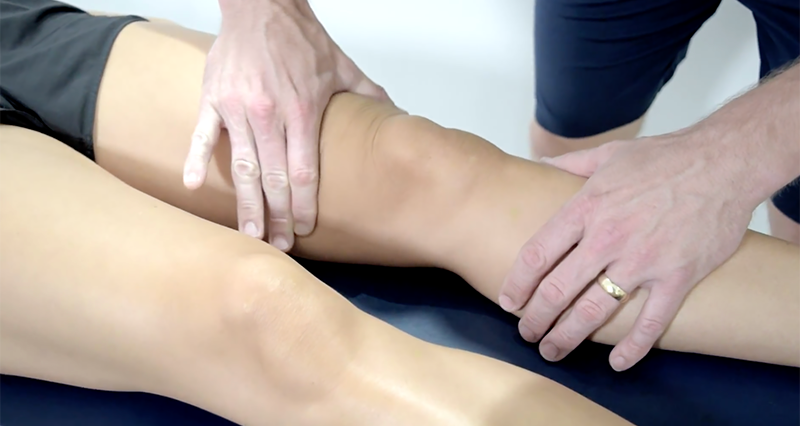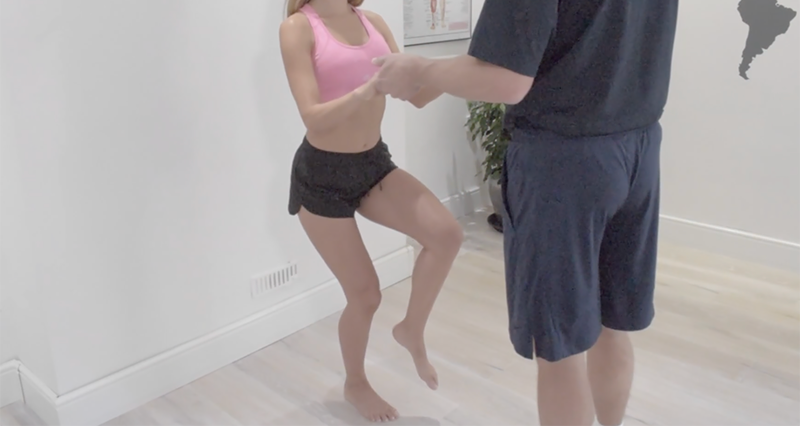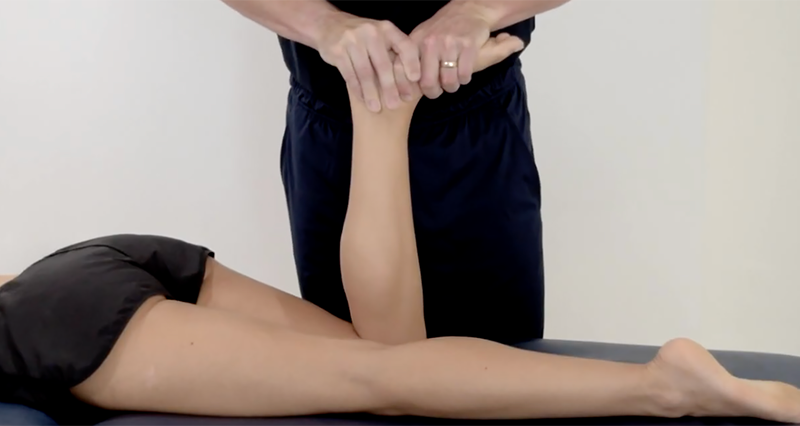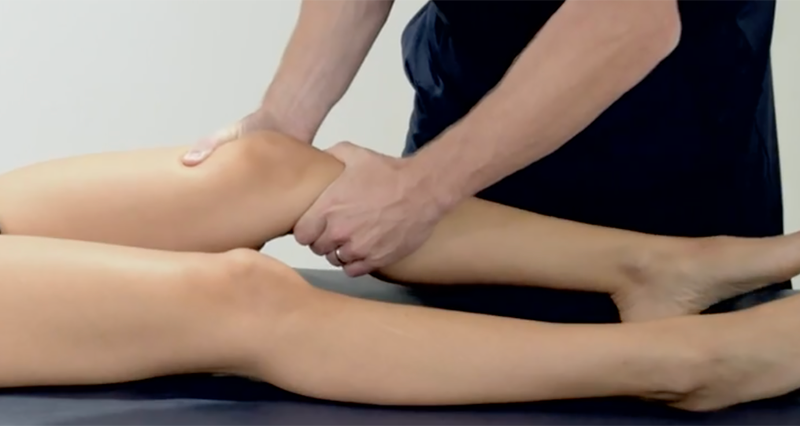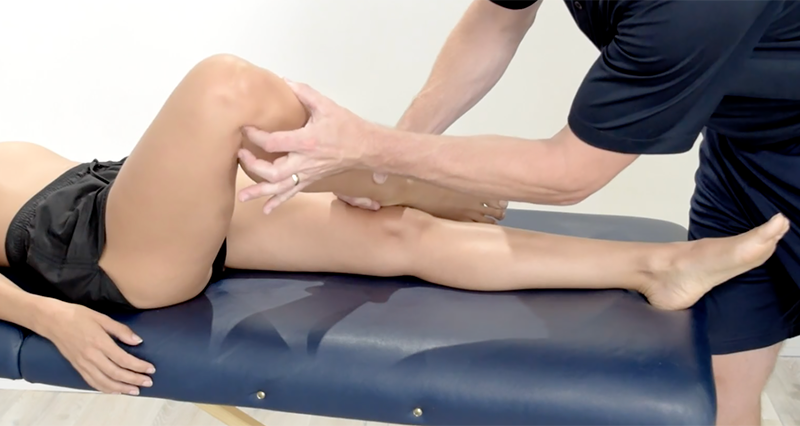The patella glide test evaluates both the mobility and stability of the kneecap. This assessment is particularly vital for diagnosing conditions such as instability or maltracking.
How to perform the patella glide test:
First, lie the patient on their back with their legs either straight out or slightly bent at the knee. Then, stand beside the patient, fingers on both edges of the patella. Glide the patella up and down in the groove with fingers placed on it.
This movement assesses the patellar mobility and its ability to track smoothly along the femur during knee flexion and extension During the glide, the examiner watches for abnormalities or restrictions in patellar movement.
Normally, the patella should move smoothly and symmetrically within the femoral groove without any significant deviation or tilting. Ask about discomfort or specific sounds, for example, grinding or clicking, hinting at maltracking.
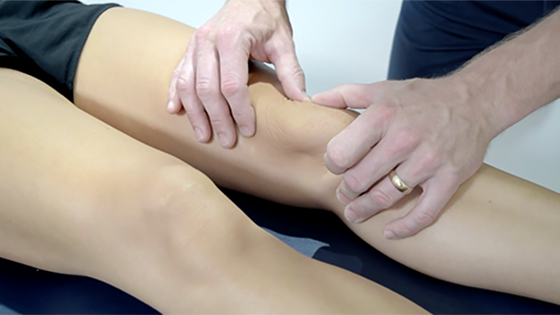
Patellar mobility results
Based on the observations and patient feedback, assess the patellar mobility and stability. In particular, restricted or asymmetric patellar glide may indicate patellar maltracking, and therefore, instability, or other underlying knee joint issues.
Considerations
Clinicians use the Patella Glide Test, in addition to other methods, to diagnose knee issues and assess joint function. Gentle testing and clear communication are crucial to ensure the patient’s comfort and cooperation.
Patella glide test related injuries
Patellofemoral Pain Syndrome (PFPS) results from the patella (kneecap) rubbing on the femur bone underneath. It may also be known as Runner’s knee, Chondromalacia patellae, anterior knee pain, and Patellofemoral joint syndrome.
